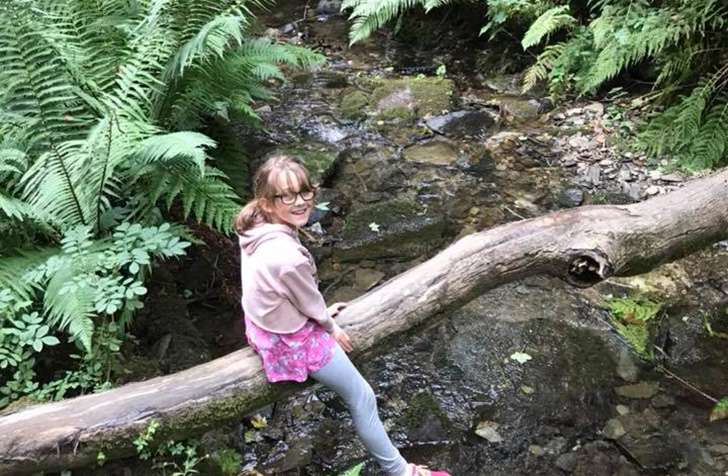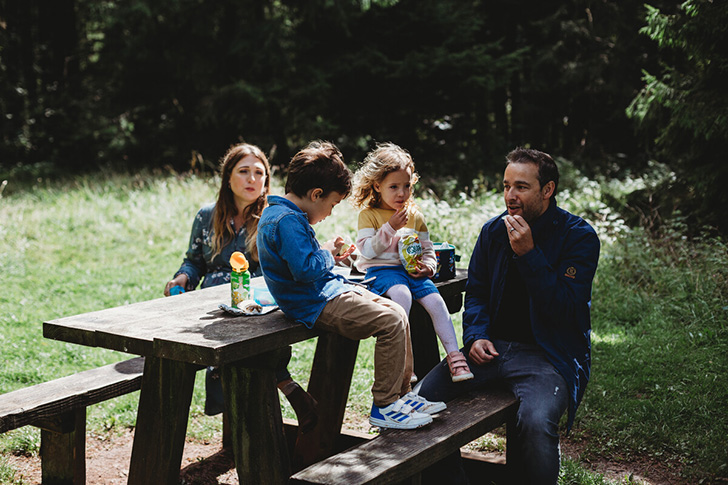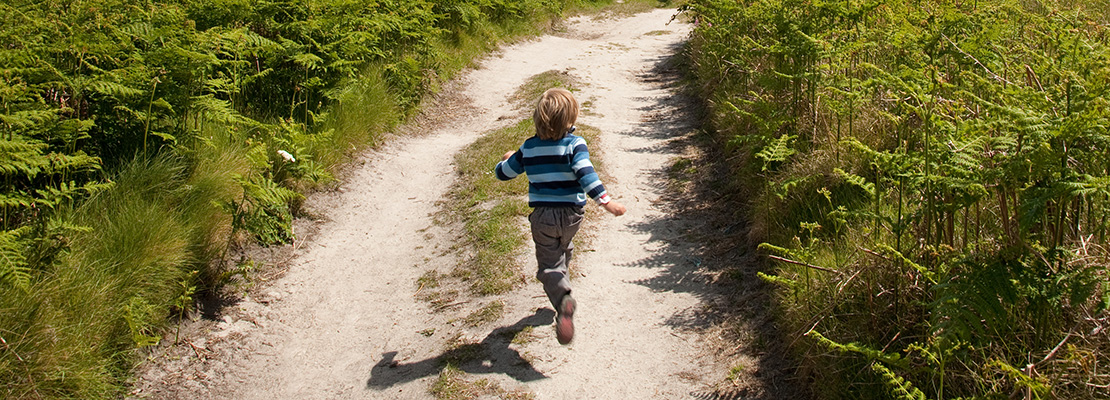Go wild in the country: child-friendly nature activities this summer
As the school holidays get real, Natasha Sones offers winning ideas to encourage children into nature.
It can be hard to entice children outside sometimes, with the lure of television, tablets, or, in the case of younger ones, the cries of ‘I’m too tired!’ But there are plenty of enjoyable activities outside which are fun for the whole family to take part in and will help spark curiosity about the countryside or coast.
1. Geocaching
Geocaching uses a mobile phone app to hide and find containers, called ‘geocaches’ or ‘caches’, at specific locations marked by coordinates all over the world. There are often clues to help you. The caches can be very tiny and often hidden in the most ingenious places. You may want to take along tweezers and wipes!
This is a fantastic way to get kids excited about getting outside. It also offers an opportunity to discover places you never knew existed near your home. It’s a gentle way of easing them away from indoor screens as they’ll still need to download a geocaching app onto a phone.
2. Scavenger hunt
If you want them away from screens completely, a scavenger hunt is always fun. If you’re working in groups, it might be helpful to spread the game out over a larger area, so that you can’t be spied on by your competition. Scavenger hunts can also be adapted for different ages: from a red thing, a green thing and a black thing’ for the pre-schoolers to ‘a gull feather, stone with a barnacle on it, a strand of kelp etc’ for the budding naturalists.

3. Fossil hunting
Fossilised animals and plants can be found anywhere – even in your garden – but they’re most easily spotted near the seashore on beaches, under rocks or by rivers. You can find fossils on many of England’s beaches. All you will need is some bags to keep your treasures in, a notebook and pen to record your finds – and a geological hammer and goggles (if you get serious enough to crack open likely pebbles).
Some of the most famous fossil beaches in England are on east Devon and Dorset’s Jurassic Coast, the Isle of Wight and Yorkshire. You can check out a list of some of our most ancient coastlines here. Make sure you keep clear of any unstable rocks or cliffs. Use your imagination to think about the sort of land that it once lived in. Who knows – you could discover your own fossil and be the first person to have ever seen it!
4. Spot the signs of the season
Going on a nature walk is a surefire way to get kids excited about an ordinary walk. Nature is waiting to be discovered wherever you look. In springtime, you can look for flowers such as daffodils and bluebells and spring blossom. In summer find colourful flowers such as poppies and foxgloves. Search for butterflies and insects. Blackberry picking is a popular pastime. August, September and early October is the best time to find them.
Do take your camera – children will love taking pictures of the wildlife you might spot. You could make a scrapbook or project about your discoveries and stick any photos in. Look for animal tracks you could draw, fallen leaves to stick in, wildflower species, tadpoles in rivers and more. Don’t forget binoculars if you have them.
The National Trust has a 50 things to do before you’re 11¾ checklist to complete, from watching the sunset to creating wild art.
5. Have a picnic
From full-blown afternoon tea in the garden to a few sandwiches on a blanket at the beach, a picnic makes eating outside much more fun. Younger children will enjoy a teddy bear’s picnic in the forest. Take your favourite cuddly toy along and something to sit on. Everyone could pack their own lunchbox or bake some cookies to munch on and invite a friend. You could build a den if you find enough sticks or climb some trees, too.

6. Dog walks
If you have a dog – or can borrow one — this is a great reason to go outside. You could meet up with other dog owners too (depending on current lockdown rules in your area). Children will learn the responsibility that comes with having a pet and needing to exercise them and clean up after them. They can also have fun throwing sticks or balls, or just running around with them. Get in extra exercise and burn off energy by taking along bikes, skateboards, and scooters. Find out how dogs have helped CPRE folk connect with the outdoors here.
7. Go fly a kite
Windy days are made for flying kites. This could lead to an opportunity for children to learn about wind speed and weather. It also fosters concentration and focus on an activity. It can even be good exercise for your child’s eyes as they control the kite in the air. Rolling down hills is also good fun if you are up some big hills.
8. Conquer a castle
Find your nearest castle to explore and re-enact what may have happened within the walls years ago. Exclusive discounts are available for CPRE members on entry to almost 100 of England’s most splendid attractions. Enjoy a day out at some of the finest castles, arboretums, museums, stately homes and gardens you can find in England’s countryside and towns.

9. Get active in the park
Playing sports in a local park or green space is a fabulous way to get some exercise as well as having fun. Take a football, frisbee or rounders/cricket set with you. This way the whole family can be involved and improve skills such as balance, coordination and spatial awareness. Another way to be active outside is to go for a bike or scooter ride. Go and explore your local surroundings, whether it’s at your local park, beach or forest. Note the different plants and terrain you see along the way.
10. Have fun in the water
Being in water is fun for all ages, and there is a whole host of watersports, which are guaranteed to get kids excited to be out of the house. If you’re near the coast, a day at the beach is an inexpensive day out, all you need is a bucket and spade, snacks and maybe some money for an obligatory ice cream.
You might want to take some body boards, woggles or floats to enjoy the sea safely. Ensuring you have buoyancy aids of course, and follow beach safety rules. Alternatively, a relaxing boat trip down a river, hiring a rowing boat or just messing about with a sprinkler in the garden on a hot day can cool you down and while away a few hours – and get you all outside.
If you’re intrigued, check out CPRE’s guide to open-water swimming spots for inspiration!
11. After dark
When it is dark, wrap up warm and find a cosy spot to lie down in your back garden or look out of your window for a spot of stargazing. Ideally, it will be a nice clear night with not too many clouds. You need to be in as dark a place as possible. If you’ve got a practised star spotter guide with you, you could try to connect the dots of constellations, or you can use a night sky app or our handy guide. Record the constellations you see in a star diary so you can compare them with what you see at another time of year.

About the author
Natasha Sones has an outside family adventure travel blog: www.natashasoneseditorial.com/blog. Follow her blog or her Instagram account: @natashastarseeker if you love family lifestyle articles.









